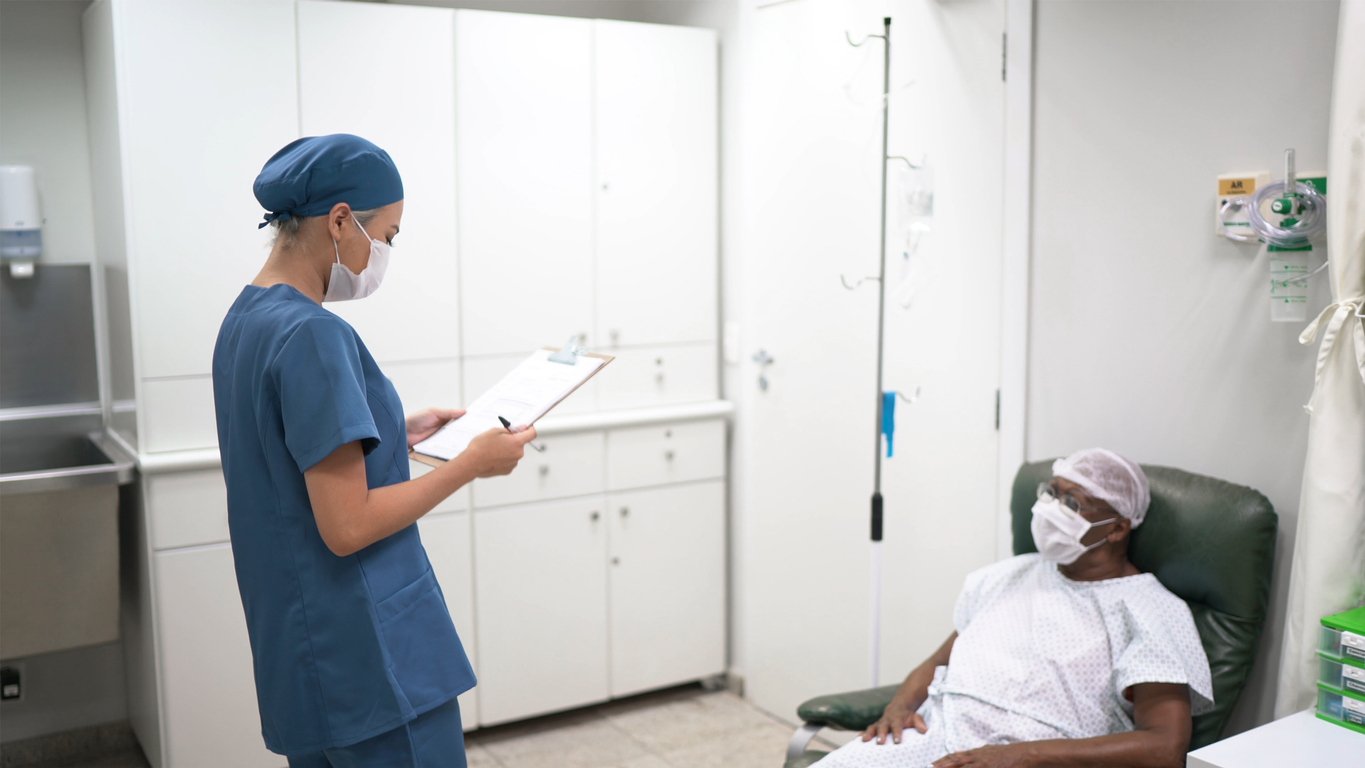<h3 class=”HeadAa40MIstyles”>Possible link exists between hyperuricaemia and CKD, ISR Spring Meeting hears</h3>
A fascinating talk was delivered by Prof Austin Stack on the evidence linking hyperuricaemia and chronic kidney disease (CKD) at the recent Irish Society for Rheumatology (ISR) Spring Meeting.
Prof Stack, Professor of Medicine and Consultant Nephrologist at University Hospital Limerick, said there are 413 new patients with kidney disease each year. In Ireland, there are 4,362 people with end-stage kidney disease.
“Luckily, we have a very good transplant service, one of the best in Europe, and over 50 per cent of our patients have a functioning kidney transplant,” he said.
However, 41 per cent of these end-stage kidney disease patients are on haemodialysis (HD) and 6 per cent on peritoneal dialysis/home HD. Despite treatments, a diagnosis of end-stage kidney disease is a predictor of a shortened life span.
“So it behoves all specialists and primary care physicians to try and modify any potential modifiable risk factor we can.”
The rates of end-stage kidney disease are on the rise in Ireland and elsewhere — by 2020, there will be almost four million patients with the disease. Furthermore, there is a rising prevalence of hyperuricaemia in the Irish health system. According to data presented from the north and mid west, 26.5 per cent of men were hyperuricaemic in 2014, up from 20.3 per cent in 2006.
CKD is caused by a primary insult, such as tubular and interstitial insult, which provokes a reduction in nephrons. Following that reduction, there is propagation of other potential risk factors, like secondary hypertension.
“We try to target and control these, but to be honest, apart from a small segment of the CKD population with specific inflammatory vasculitis, for the majority we have a standard therapy such as blood pressure control, etc, but beyond that there has been very little else. So you may say we haven’t made significant or substantial progress in identifying new modifiable risk factors and indeed treating them.”
There is significant controversy on whether hyperuricaemia is a true risk factor for other non-rheumatology diseases such as CKD, hypertension and metabolic syndrome.
“The jury is still out in this audience on whether it is causally related to major metabolic disorders,” he explained. “Some may think it may be a ‘villain’, but many believe it is a marker that is in the wrong place at the wrong time. This suggests that if you control hyperuricaemia and indeed gout, that in fact you do get better clinical outcomes.”
However, he presented some data that showed comorbidities are common in patients with asymptomatic hyperuricaemia.
“As you can see, the prevalence of major CVD risk factors such as CKD and obesity is substantially higher in those who are hyperuricaemic,” he said.
“If you also look at levels of serum uric acid and the burden of disease, you can see a very strong, almost linear, correlation between rising levels of serum uric acid and the prevalence of hypertension and particularly CKD, either stage 2 or higher. The suggestion is at the very least hyperuricaemia is a risk marker for underlying disease burden, particularly CKD.”
He acknowledged that the problem with linking uric acid to CKD is that many individuals with hyperuricaemia have coexisting pathology. However, he referred to the famous study carried out by Mazzali et al, where they exposed rodents to oxalic acid, after which they became hyperuricaemic.
The rodents also developed systolic and diastolic hypertension, with a strong correlation between the degree of hyperuricaemia and development of blood pressure. Upon dissection, they also found significant interstitial fibrosis in the rodents’ kidneys, which is irreversible. When they treated the animals with allopurinol, blood pressure was normalised and the degree of interstitial fibrosis was reduced.
“There are at least 20 epidemiological studies — prospective, observational and retrospective — which have linked hyperuricaemia to the progress of CKD or ultimate progression to end-stage kidney disease.
“It’s been done in many countries with diverse populations. This is not chance. There must be something going on linking hyperuricaemia to the progression of CKD.”
He said that, in his view, there is a direct link between gout and CKD but again acknowledged the problem of patients’ comorbidities. He also said that patients also have intermittent doses of anti-inflammatory drugs, which could also increase the risk of kidney disease.
Taiwanese data has found that individuals with gout had almost 60 per cent higher risk of new-onset kidney disease, he said, but he added that the study was limited in a number of ways.
“But we recently have looked at gout and the risk of CKD in the UK primary care population,” he said. This data was linked to hospitalisation, mortality and end-stage kidney disease.
He said that a gout cohort of about 70,000 was identified, as was a control group of 500,000.
“The primary outcome is that individuals with gout have a 30 per cent higher hazard of developing end-stage kidney disease,” he said, suggesting that this is a strong independent link between gout and new-onset kidney disease in individuals in the UK health system.
Another study from the US found that compared with individuals on a very modest dose of allopurinol, those on a higher dose have a 30 per cent lower rate of progression to kidney failure, suggesting a dose-response effect.
He added that, in Japan, doctors are already treating asymptomatic hyperuricaemia with uric-lowering therapy.
<h3 class=”HeadAa40MIstyles”>Update on RABRI presented at conference</h3>
The Rheumatoid Arthritis Biologics Registry of Ireland (RABRI) has 81 patients currently enrolled, the Spring Meeting of the Irish Society for Rheumatology (ISR) heard. Patients on RABRI must be over 18, have given their informed consent, have a clinical diagnosis of RA, and have been prescribed a new biologic therapy.
Prof Gerry Wilson, Arthritis Ireland Professor of Rheumatology at University College Dublin, presented an update on the registry to rheumatology colleagues at the recent meeting in Limerick.
“We have been recruiting for about a year,” he explained. “University Hospital Limerick has been the first centre to recruit and in total, and we are up to 81 patients recruited. Six centres are actively recruiting and we have ethics approval in Cork University Hospital, Naas General and Connolly. Ethics has also been submitted at University Hospital Kerry, Tralee.”
As in the UK, RABRI patients are followed for five years. For the first three years, assessments are recorded every six months, with annual assessments thereafter.
The other centres involved in RABRI recruitment are St James’s Hospital, Dublin; St Vincent’s University Hospital, Dublin; Mater Misericordiae University Hospital, Dublin; Tallaght Hospital, Dublin; and Our Lady’s Hospital, Manorhamilton, Co Leitrim. Centres contributing data will be paid, Prof Wilson said.
The registry has a target of enrolling 2,000 patients over the next five years and there will be follow-up with these patients after this time. Feedback on the registry to date has been very positive, Prof Wilson said, and he described RABRI as “evolving”, with features such as fatigue score having been added following consultations with users.
The patient and data collection criteria are similar to other European registries, and as RABRI is modelled on the British Society of Rheumatology (BSR) biologics register, it is hoped information will be shared readily.
“What’s different about RABRI is, we use a very effective electronic data collection system,” Prof Wilson said, adding that a paper-based system is used by the BSR.
In terms of biological agents, the registry shows that 29 patients are on etanercept, with 12 being prescribed adalimumab and tocilizumab.
Responding to questions from the floor, Prof Wilson clarified that the local data is owned by the consultant and it can be extracted via the electronic system.
RABRI, which was established by the ISR, will document all RA patients attending rheumatology clinics in participating centres in Ireland who have been commenced on a new biologic therapy.
The main objective will be to monitor response to therapy, safety, record adverse events and events of special interest.












Leave a Reply
You must be logged in to post a comment.